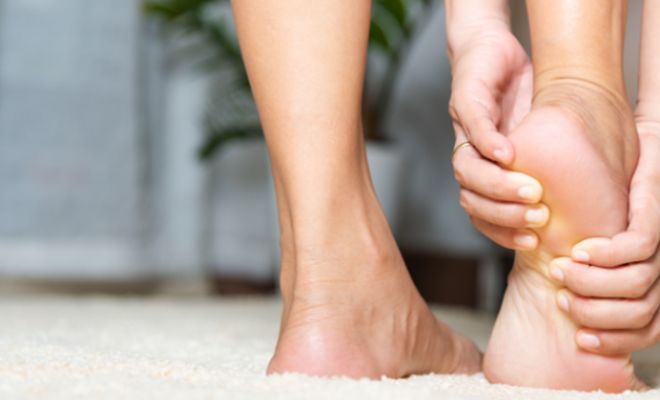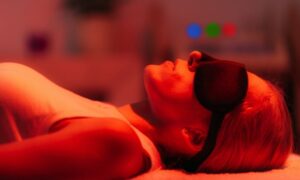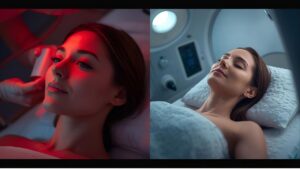Every night, my legs go numb and I can’t sleep. My toes have lost sensation. Even if I get a wound, I don’t feel pain, and it doesn’t heal well either. These symptoms may not be just simple fatigue. They are common early signs of peripheral neuropathy or diabetic foot in people with diabetes.
Diabetic foot refers to diabetic foot complications, a general term for various problems that occur in the feet of people with diabetes.
Diabetes is a metabolic disorder characterized by high blood sugar, but over time, it progresses into a systemic disease affecting nerves and blood vessels. In particular, when nerves are damaged, it causes sensory disturbances, pain, numbness, and loss of sensation, which can greatly interfere with daily life.

Conventional treatments mostly focused on blood sugar control and pain medication, but recently, regenerative medical approaches, particularly photobiomodulation (PBM), aiming to directly restore damaged nerves, have been increasingly recognized.
So, What is Whole-Body PBM Therapy?
PBM therapy is a treatment that stimulates the mitochondria within cells and activates energy production by exposing the body to light sources of specific wavelengths.
Whole-body PBM, as the name suggests, involves the patient entering a capsule-like device where light is emitted over the entire body, inducing cellular activity throughout the entire organism.
This therapy triggers complex physiological effects, including the production of ATP (the core of cellular energy), vasodilation (widening of blood vessels), inflammation suppression, and promotion of nerve regeneration.
Scientifically proven effects of PBM in diabetes treatment
PBM therapy has been the subject of clinical studies on various complications, including diabetic neuropathy, and its efficacy has been reported.
Related Research Articles
- Ferreira NL, Rocha IRC, Chacur M. Unraveling the RAGE-NF-κB pathway: implications for modulating inflammation in diabetic neuropathy through photobiomodulation therapy. Lasers Med Sci. 2024;39(1):80. doi: 10.1007/s10103-024-04171-3.
- Kumar CGS, Maiya AG, Hande HM, Vidyasagar S, Rao K, Rajagopal KV. Efficacy of low-level laser therapy on painful diabetic peripheral neuropathy. Indian J Endocrinol Metab. 2015;19(4):523-9. doi: 10.5978/islsm.15-OR-12
- Wang K, Zhao H, Zhao X, Zhang X, Zhang W, Cheng Y, Ge J. Photobiomodulation for diabetes and its complications: a review of general presentation, mechanisms and efficacy. Ann Med. 2024;56(1). doi: 10.1080/07853890.2024.2433684
In this way, PBM is establishing itself as not merely a physical therapy or adjunct treatment, but as a new therapeutic paradigm that induces nerve regeneration and tissue repair.
Effects observed in real-world clinical settings
Many diabetic patients who have received whole-body PBM therapy report the following positive changes:
- Reduced leg numbness: Improved sleep quality and less fatigue in daily life
- Enhanced wound healing: Diabetic foot ulcers recover faster than with conventional treatments
- Increased overall stamina and vitality: Reduced chronic inflammation leads to improved immunity and energy levels
Whole-body PBM therapy is being used as a non-invasive, painless, and safe alternative for patients who have reached the limits of existing drug therapies or who are at risk of surgery or amputation.
Conclusion: Beyond blood sugar control—Diabetes and Regeneration
Although diabetes can be managed through dietary and lifestyle changes, it remains a lifelong condition with conventional drug therapy. The complications that arise from diabetes-nerve damage, loss of sensation, wounds that worsen, and can eventually lead to amputation-are even more frightening, and this vicious cycle must be broken early.
Whole-body PBM therapy goes beyond simply managing the disease; it represents a novel approach aimed at “restoring” damaged nerves and tissues.













